Expand Your Fleet with a Code Vessel - Python + Pandas
Overview
In this tutorial, you'll walk through the steps required to set up a Vessel using Pandas to transform data that exists in Platform. By the end of the tutorial, you will know how to:
- Set up a Vessel with Code.
- Write a script directly in the UI.
- Install package dependencies for your solution.
- Check to verify that a Vessel ran successfully.
- Connect Vessels together as part of a Fleet
For the sake of the this tutorial, we suggest starting off by building the Fleet that is built using this tutorial .
Steps
Step 1 - Initial Setup
Using the sidebar, click on Projects to navigate to the All Projects page.
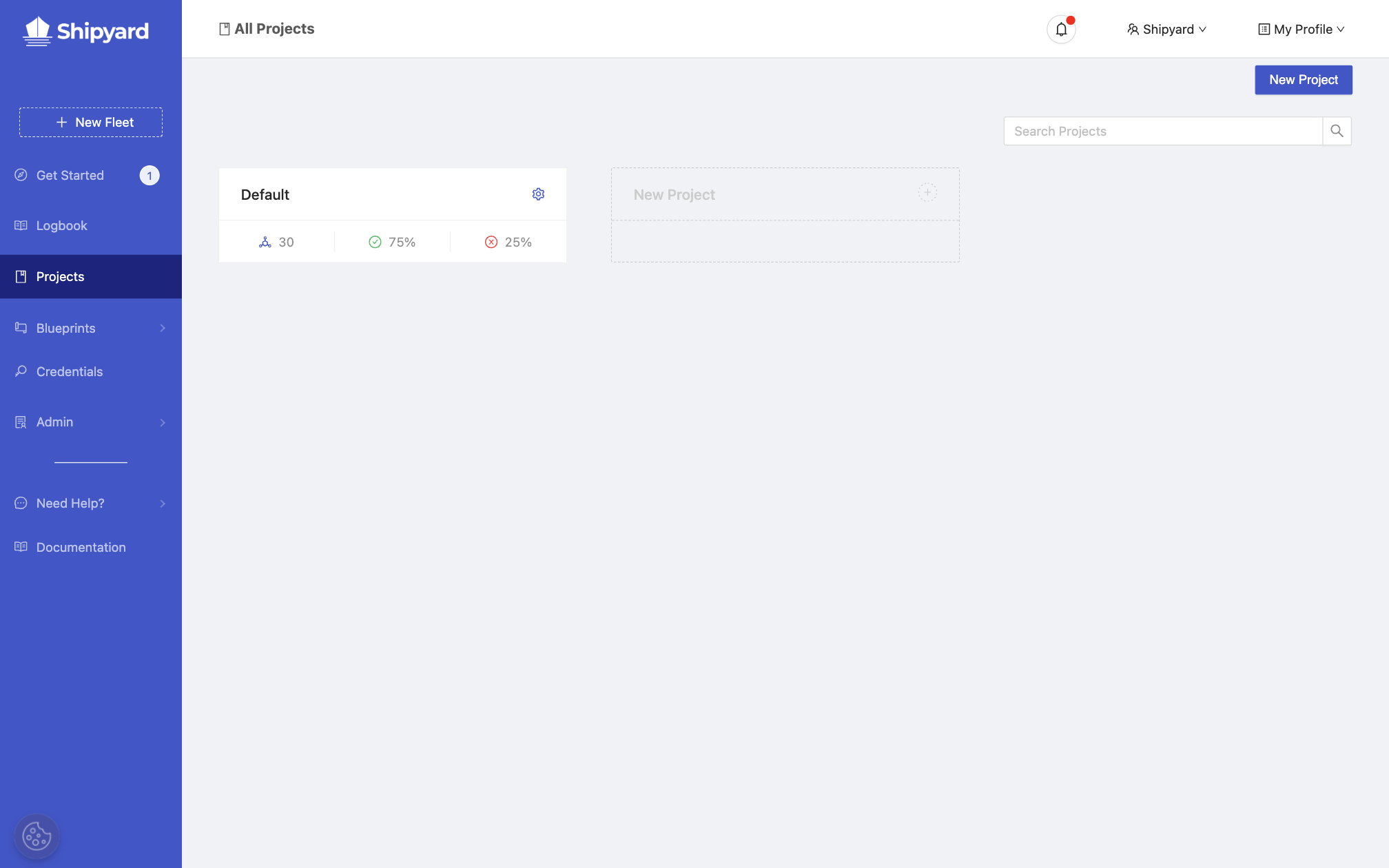
Click on the Default project.
Find the Download File from Webpage and Email to User Fleet and hover over the Actions vertical-dot menu and select Edit.
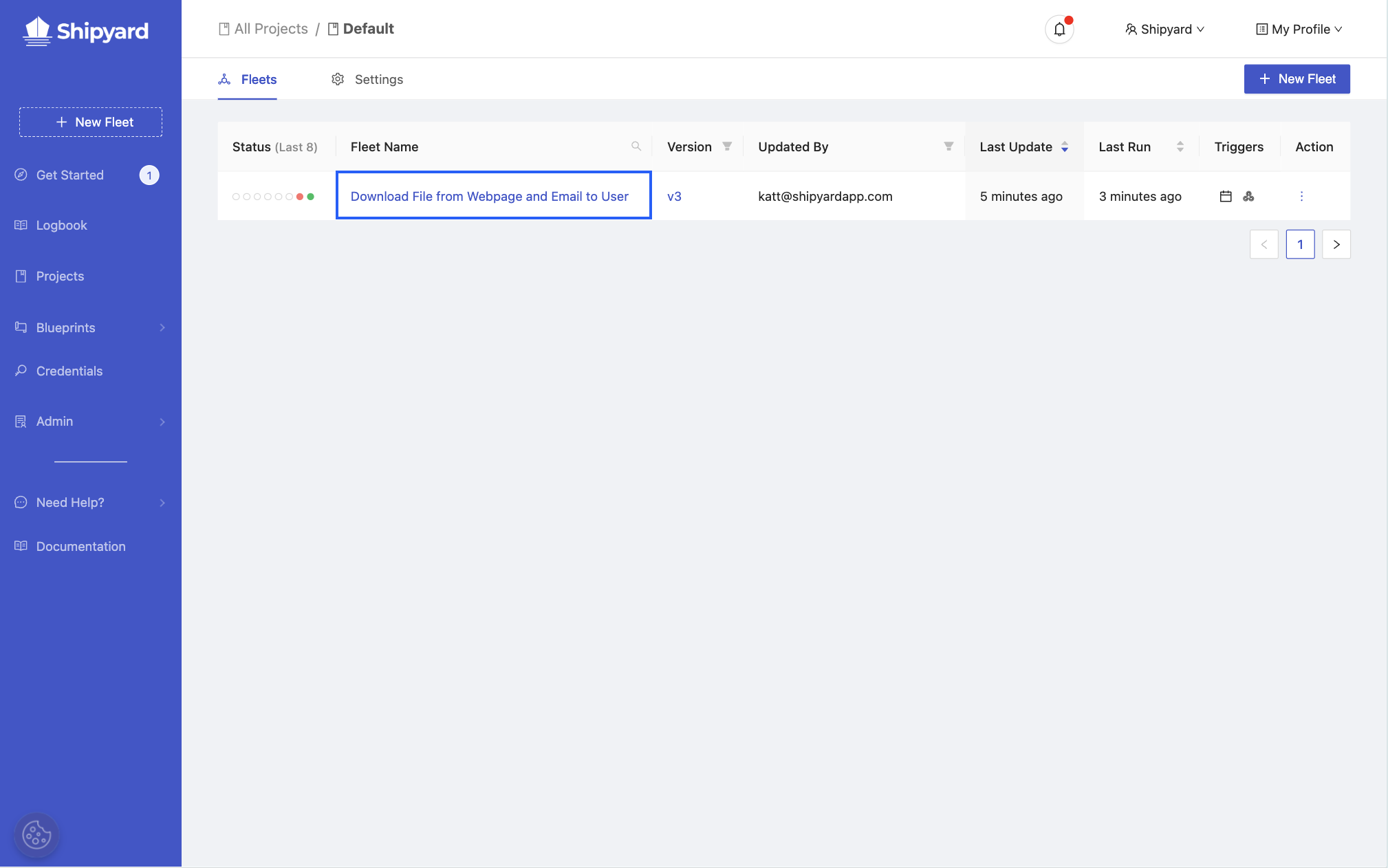
You are now ready to add a code Vessel to your existing Fleet
Step 2 - Provide your Code
Using the Fleet Builder sidebar, click on Python. This will automatically add a new Vessel to your Fleet.
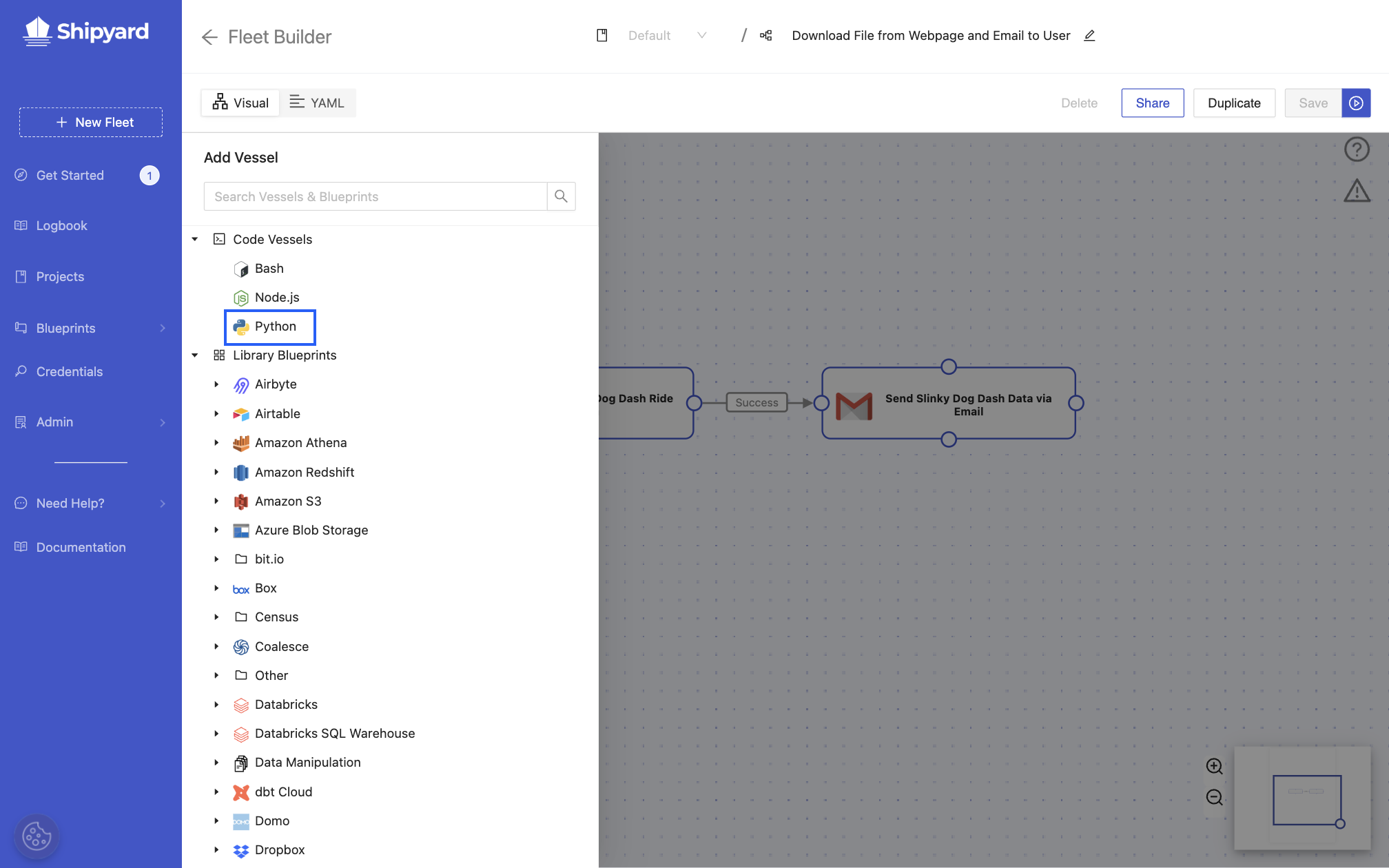
Name your Vessel Add Time in Hours.
Platform allows you to provide code in three different ways: write the code in the UI, upload the code as a file, or clone the code from a GitHub repository. This tutorial will focus on writing the code in the UI and uploading the code as a file. Running code from GitHub is covered in this tutorial.
- Write
- Upload
- Leave Python Version as 3.9
- Under File to Run, enter add_wait_times_in_hours.py
- Under Code, paste this code block:
import pandas as pd
df = pd.read_csv('disney_world_wait_times/slinky_dog_dash.csv')
df['SPOSTHR'] = round(df['SPOSTMIN'] / 60,2)
df.to_csv('disney_world_wait_times/slinky_dog_dash_with_hours.csv',index = None)
Your setup should look like this:
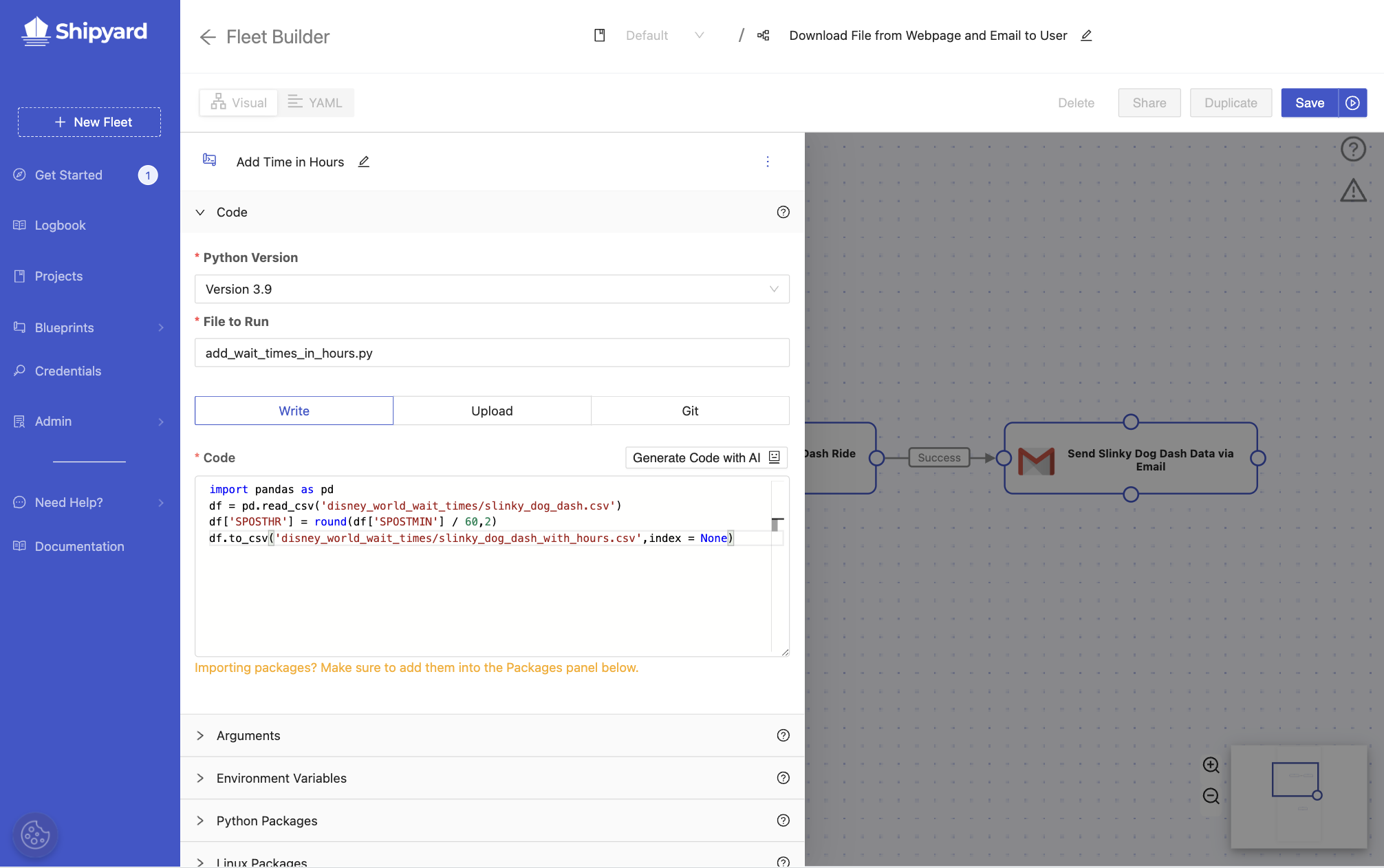
Leave Python Version as 3.9
Under File to Run, enter add_wait_times_in_hours.py
Change the code method from write to upload

Download the file add_wait_times_in_hours.zip from here
Under Upload File, click to find the file from step three and upload it.
After upload, your setup should look like this:

Step 3 - Install Python Packages
For this tutorial, we don't have any environment variables to set up. However, we do need to install the Python Package called Pandas for our code to run.
- Find the Python Packages panel in your Vessel's settings and click on it to show the package installer.
- Click the Add Python Package button.
- In the Name field, enter Pandas.
- In the Version field, enter >1.0.0

The version field can accept many types of arguments including: >, <, ==, >=. <=, etc. You can use learn more about how to define package versions in our documentation here
Step 4 - Connect Vessels
In the previous tutorial, we created two vessels: Download Slinky Dog Dash Ride Data and Send Slinky Dog Dash Data via Email. This process allowed us to download the wait time information for the Disney World ride Slinky Dog Dash and email the CSV file to our email address. The vessel that we created in this tutorial, Add Time in Hours, should fit in the middle of these two vessels to add the column to have the wait time in terms of hours.
We will need to break the connection that currently exists between the two original Vessels. To do that, hover your mouse over the word success, then a small x will appear. Click the x to delete the connection.

Click and drag from a circle on the Download Slinky Dog Dash Ride Data Vessel towards a circle on the Add Time in Hours Vessel.
Click and drag from a circle on the Add Time in Hours Vessel towards a circle on the Send Slinky Dog Dash Data via Email Vessel.
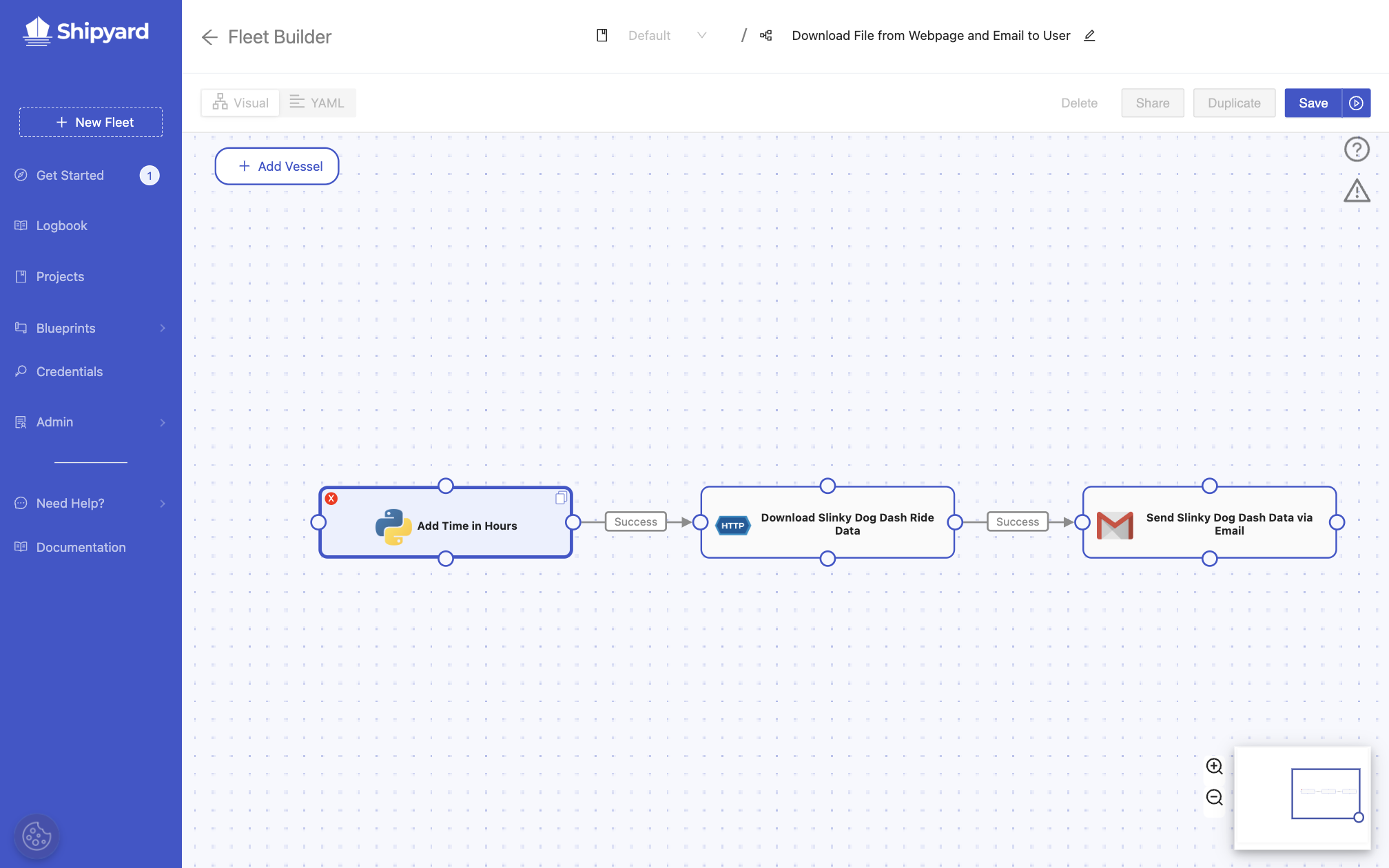
Step 5 - Edit Email Vessel
- Click on the Send Slinky Dog Dash Data via Email Vessel to open the Vessel menu.
- Change the File Name to slinky_dog_dash_with_hours.csv.
- Click Save in the bottom right corner of the screen.
Step 6 - Running the Vessel
In the top right corner of the Fleet builder, click the Run Now button. This will schedule your Fleet to run immediately and redirect you to Fleet Log page.
Step 7 - Checking the Logs
You should have been redirected to the following page that shows you all of the details about the specific Log you clicked.

After your Fleet has completed running, you should have received a new email with another CSV. If you open that CSV, you are able to see the new SPOSTHR column that we created with our code Vessel.

You've successfully created and run a Fleet that contains Vessels built with code and low-code Library Blueprints!